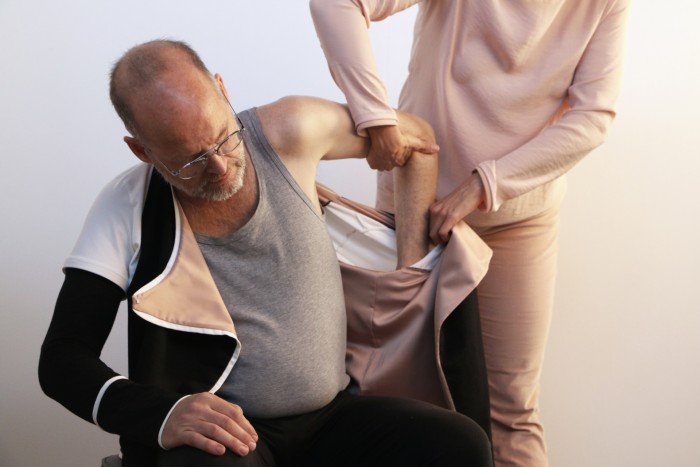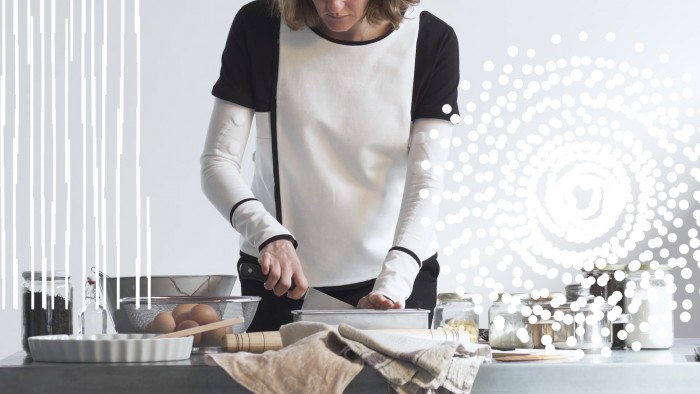Connextyle is a rehabilitation garment that is inspired by the Japanese technique of Kintsugi. Kintsugi is the method of repairing broken ceramics using precious metals, making the item more beautiful than before. Just like the ancient practice, the Connextyle shirt transforms as the patient’s abilities improve.
The shirt features technical sleeves which are layered with sensors. These sensors measure a patient’s range of motion, muscle use as well as joint rotation. Once the patient has completed their rehabilitation, they are able to trade in their technical sleeves for the “Kintsugi sleeves”, a more fashionable version of the technical sleeves.
The rehabilitation garment works together with the Constructing Connectivity app. The app allows patients to track and monitor their rehabilitation process. It provides them with activities to improve their muscle use, a platform on which to analyse their progress as well as features which assists therapists in helping their patients.
According to the creator of the Connextyle garment, Jessica Smarsch, “The reason for creating a full garment (as opposed to sticking patches on the skin, or strapping sensors on the arms) was to let patients feel as comfortable and natural as possible during the months-long rehabilitation process.”
Patients who have suffered a stroke are expected to begin the rehabilitation process after about 24 hours following the stroke. Wearing an all-day shirt, fitted with multi-sensory stimulation could help speed up the recovery process of patients. The senses which are stimulated by the shirt include: somatic, visual and audio.
"Using daily-living objects is more effective in rehabilitation exercises because they directly link to the goals of the patient, to regain independence,” Smarsch discovered alongside assistance and guidance from physiotherapists.
The shirt is designed with magnetic closures instead of buttons in order to help patients who have a limited range of motion. It also features a non-restrictive double panel front opening which allows patients to easily slip the garment on and off.
The ides for the Connextyle garment was born out of a previous project by Smarsch. “Constructing Connectivity was the original system and software that I created, which brought mind-body connectivity back to the modern industrial weaving process by letting users create patterns for textiles with rhythmic body movement,” says Smarsch.
Meeting neuroscientist Dr Raymond van Ee, whose work focuses on how rhythmic multi-sensory stimulation creates more new neural pathways than uni-sensory stimulation (an essential step for relearning how to move after a stroke) motivated her to adapt her designs.
“When I began adapting the design system for stroke rehabilitation and developing the new app, my software developer (Vention Technologies) and I utilised the same principles from the original software but enhanced it with special features for patient and therapist use,” says Smarsch.
Regarding therapists’ use of the shirt, the application will consist of standardised exercises for the patients, at the same time therapists will be able to specially customise these exercises to the needs of the patients. The data gathered by the app will help therapists analyse patient progress when they are not around to physically monitor their patients.
The Connextyle garment as well as the programming are still in the prototype phase. Smarsch presented the shirt at the 58th Salone del Mobile in Milan.
Read More:
Braille clothing is making it easier for the visually impaired to get dressed
Wearables that extend the function of the human body
On cityscapes and soundsuits with future-proofing graduate Ines De Peuter









